October 2021 Edition
Welcome Message from the Executive Director
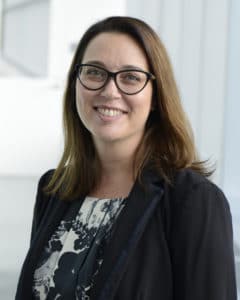
Problems that impact our daily lives, the earth’s future, our ability to connect with one another. Problems such as climate change, increasing demands for telecommunications and computing solutions, and the need for clean, renewable energy sources and new medical diagnostic sensors and therapies.
We are starting this new quarterly newsletter, I2: Interdisciplinary Insights, to share our insights on these issues and more because we have seen how important science communication is during the pandemic. We also want to offer you ways to connect with and support these efforts. I encourage you, as our colleagues, friends, and extended community, to share your suggestions, comments, and feedback and begin a dialogue with us on interdisciplinary STEM research and education for the public good.
Annette (Nina) Gray
Executive Director and Associate Dean for the Sciences, Advanced Science Research Center
Neuroscience Highlights
Secrets to a Healthy Brain
New brain cells are formed every day in response to injury, physical exercise, and mental stimulation. Glial cells—the support cells of the nervous system—are highly responsive to these signals, but as we age they respond less and less. This progressive decline has been linked to age-related changes in cognition, perception, and movement.
Professor Patrizia Casaccia’s lab in the ASRC’s Neuroscience Initiative has identified a molecule that is necessary for one aspect of this response: the repair of myelin that wraps around and supports neurons.
Tips from Brain Awareness Week
During 2021’s Brain Awareness Week this past March, the Neuroscience Initiative offered a series of essential mental health tips anyone can follow, starting now! Click below for details and sharable graphics for social media.

Did you know? A growing number of studies suggest that nutritional treatment can help prevent, treat, and improve mental health, including depression and cognitive decline.
Tip: We’re picking foods high in antioxidants and packed with vitamins like spinach and artichokes!

Day 2: We’re going on a run to get the blood flowing!
Fun fact: Regular exercise can lower the risk of developing depression by improving mood and decreasing anxiety, stimulate neurogenesis, improve cognitive flexibility and quality of sleep, and help you detox through sweat!
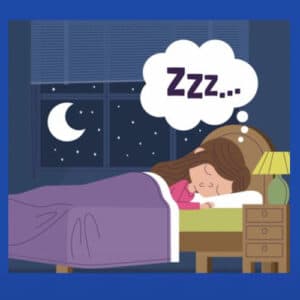
Good quality sleep is essential to our physical and mental wellbeing. 7-8 hours is key to improve memory and attention, increase energy and focus, boost your immune system, reduce anxiety and depression, and improve decision making.

Did you know? Research studies suggest meditation practice could help promote emotional health, reduce stress, anxiety, and depression and improve our sleep. It could also help preserve our brain structure and function as we get older!
Tip: Start small, relax, and keep practicing!
Learn more about research in the Neuroscience Initiative:
- Orie Shafer recently revealed a surprising truth about how light and the environment adjust our internal circadian clock.
- Susana Mingote and Dr. Shafer recently received essential grants from the National Institutes of Health to support their research programs.
Faculty Spotlight
Rein Ulijn, ASRC Nanoscience Initiative

Dr. Rein Ulijn, founding director of ASRC’s Nanoscience Initiative and Einstein Professor of Chemistry at Hunter College, was recently awarded a U.S. Department of Defense Vannevar Bush Faculty Fellowship—the agency’s most prestigious single-investigator award.
The Vannevar Bush Fellowship supports out-of-the-box ideas where researcher creativity intersects with the unknown. Fellows are free to pursue unfettered research, with the results of the work informing and providing invaluable direction to the Department of Defense’s research and efforts to train the next generation of scientists and engineers.
Specifically, Ulijn’s $3 million five-year fellowship will help understand how complex functions emerge from mixtures of simple biological molecules, and to repurpose this understanding to create new nanotechnology inspired by living systems.
Ulijn says the award is “a true honor and massive credit to my research team that the Department of Defense has chosen to support our research.”
“Professor Ulijn’s work expresses fearless creativity,” said Nina Gray, Graduate Center Associate Dean for the Sciences and Executive Director of the CUNY ASRC. “With this important support from the Vannevar Bush Faculty Fellowship, Ulijn’s research will expand and refine our bio-inspired nanotechnology toolkit. This could allow us to achieve truly novel nanomaterials for a broad range of medical, environmental and defense applications.”
When asked how research is progressing at this stage of the pandemic, Ulijn said, “It has been amazing to see the ASRC come back to life over the past months.” He added, “The labs are full of activity again and the place is buzzing. One of my favorite things about being at the ASRC, close to the lab, is the ability to quickly and frequently exchange ideas and hear about lab results pretty much as they happen. We will also soon open the ASRC Sensor CAT office, which will serve as a space for academic-industry.”
The ASRC Sensor CAT, awarded to Ulijn in July 2019, brings together academia, government, and the private sector to drive workforce development, enable job-generating entrepreneurship critical to New York’s post-pandemic economic recovery, and provide a return on New Yorkers’ investment in its public university system. CUNY, one of the nation’s largest public university systems, is ideally positioned to advance these aims. The university consistently ranks as a top engine of economic mobility for low- and middle-income students and their families. Further, the talent cultivated at CUNY constitutes New York’s current and future science workforce.
Given that the ASRC is a hub for advanced technology and interdisciplinary research within CUNY, it is also well-positioned to help support these efforts and address challenges faced by industry. “Ultimately, the ASRC Sensor CAT will lead to new intellectual property, attract industry, create jobs, and help make New York a leader in areas where life sciences interface with engineering and physical science.” Ulijn elaborated, “The world needs scientists who come out of Ph.D. programs ready to innovate and lead as entrepreneurs and private sector researchers. Addressing this need requires long-term, nimble partnerships between educational institutions, government agencies, and the private sector.”
Ulijn’s commitment to training the next generation of NY’s entrepreneurs expanded further this semester. “Through a partnership with Baruch College’s Zicklin School of Business — another CUNY school — we launched the first graduate-level business course for STEM students focused on entrepreneurship,” said Ulijn. “The class will impart valuable skills that are necessary in the modern STEM workforce and allow scientists to thrive, innovate, and lead within a lean startup culture.”
Graduate Center President Robin L. Garrell remarked that Ulijn’s “success exemplifies the impact of the ASRC as a state-of-the-art interdisciplinary research center, and demonstrates our commitment to advancing science and engineering research in areas that are of critical importance to the nation.”
Read the press release: Rein Ulijn Receives Vannevar Bush Faculty Fellowship (May 5, 2021)
ASRC In the Community
Community Sensor Lab
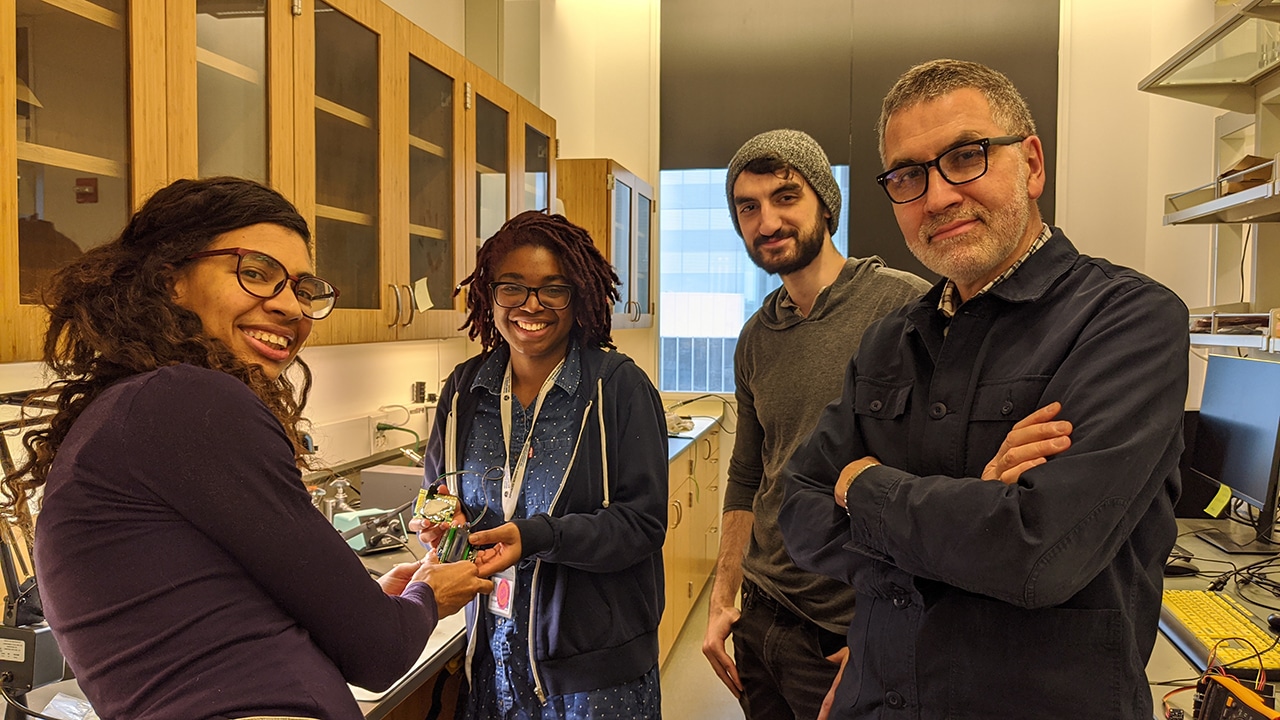
How can technology improve personal and environmental health in NYC communities? How can we help empower communities with technology? These questions motivated Research Associate Professor Ricardo Toledo-Crow and Science Education Coordinator Kendra Krueger to start the ASRC Community Sensor Lab in 2019 – an initiative to teach high school students and community members of all ages how to build their own low-cost, DIY (Do-it-Yourself) environmental sensors and how to understand the data. Community Sensor Lab students are empowered to monitor their own local environments – their home, school, gym, park, work, etc. – and build a real world understanding of how their daily lives and health are impacted by scientific discoveries.
Student Highlights
Congratulations to our Graduate Student Award Recipients!
Zabdiel Roldan Ayala, Queens College masters student in Earth and Environmental Sciences working with Dianne Greenfield, received a 2021 FlowCam Aquatic Research Equipment and Travel Grant to study phytoplankton communities in Long Island Sound to better understand the spatial and temporal treds of the different species present there and the impact of urban sewar runoff and climate change.
Sami Sauma, a PhD student in the Casaccia lab, became the second graduate student at the ASRC to receive a Ruth L. Kirschstein National Research Service Award! This fellowship will support Sami’s research on the early development glial cells in the brain, specifically oligodendrocytes, which create myelin that wraps around and supports neurons. He will combine approaches in epigenetics, bioinformatics, viral transduction, optogenetics and mass spectrometry imaging to assess the role of specific key factors in glial cell maturation that will also inform how defects in myelination emerge in certain disease states.
Roksana Azad, a PhD student in the Gardner Lab (Structural Biology, Biochemistry) received an NIH fellowship to support her work elucidating the structural dynamics of a kinase that is important for cell’s ability to sense available nutrients and adjust their metabolism accordingly. She was also featured by 1 Million Women in STEM.
Naxhije (Gia) Berisha (Ulijn lab, Nanoscience, Chemistry) and Tamar Skaist (Keedy lab, Structural Biology, Biochemistry) won GC Dissertation Year Fellowships. Gia also won a Tow Fellowship for her research on the discovery of drug-matched peptide nanocarriers for cancer nanomedicine.
Melina Giakoumis, a Science Communication Fellow and Ph.D. student in the Ecology, Evolutionary Biology, and Behavior subprogram of Biology, received a Second Century Stewardship fellowship to combine her interests in marine conservation and science communication while studying sea stars in New England this summer.
Alfredo Vidal-Ceballos, a PhD student in the Elbaum-Garfinkle Lab, received a Graduate Center Art and Science Connect Fellowship to create “molecular art” using microscopy techniques.
Introducing the 2021-2022 Science Communications Fellows
CUNY Ph.D. candidates Favour Achimba, Katherine Anderson, and Yuzhe Song are the recipients of the GC Science Communication Fellowship for 2021-2022. We are excited to work with these talented young scientists, who were selected out of a total of 53 applicants.
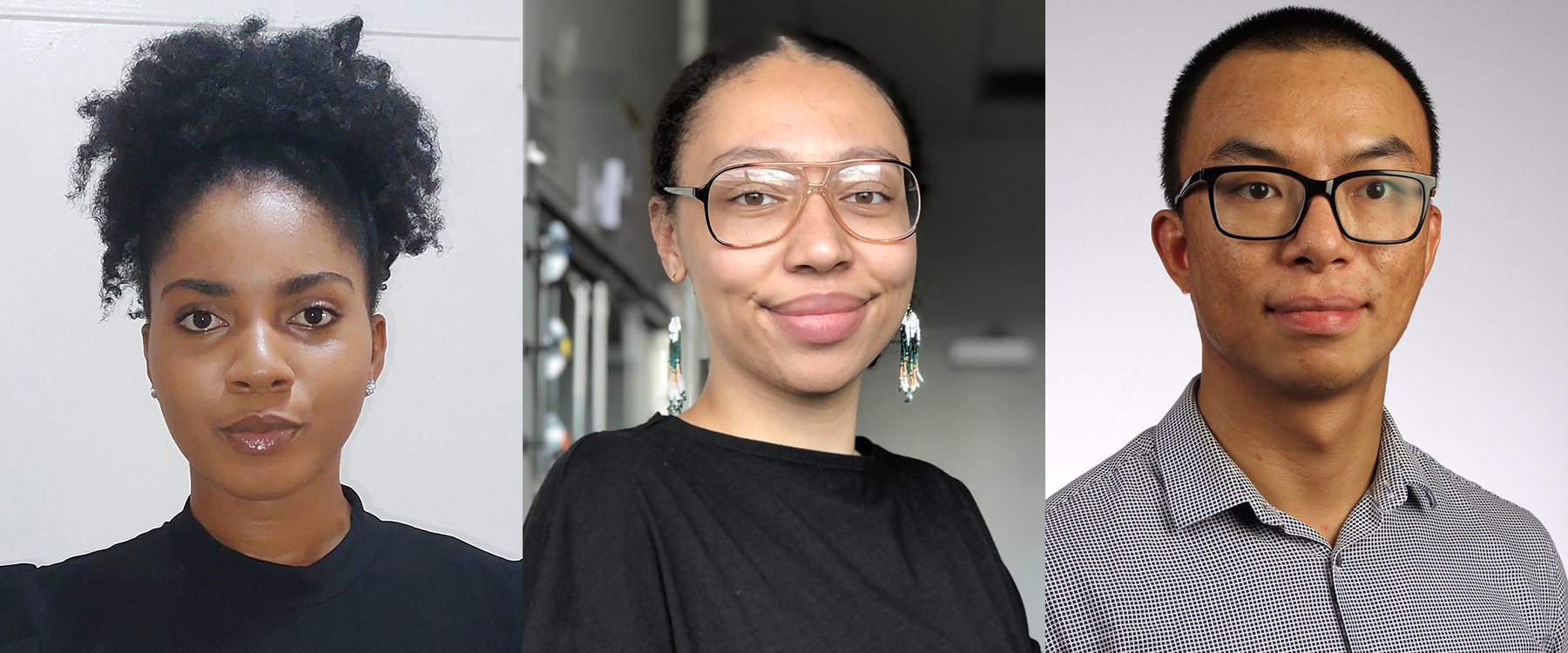
Students in the fellowship program receive training and preparation via the GC Science Communication Academy to become effective science communicators who are skilled at engaging the general public in an ongoing dialogue about their research, advocating for support of the sciences outside of the university setting, and promoting the role of CUNY in advancing science and science education for the public good.
Facility Spotlight
Macromolecular Crystallization Facility
The ASRC’s Macromolecular Crystallization Facility (MCF) provides support for both academic and industrial endeavors and is home to various instruments for protein crystallization. Dr. Eta Isiorho, director of the MCF, provide expert assistance with data acquisition, structure determination and refinement to accelerate discovery. The MCF also partners with national synchrotrons, including Brookhaven National Laboratory.
Macromolecular X-ray crystallography allows structural biologists to obtain three-dimensional, near-atomic resolution structures of proteins, viruses, DNA and RNA. They start by making crystals of the molecules they want to study, which are then exposed to X-rays. When X-rays hit atoms within the crystals, they change direction, creating characteristic diffraction patterns. Biologists analyze these diffraction patterns with advanced computational methods and eventually create a detailed structural model of the molecule. These structures are especially used to aid in drug development and discovery.
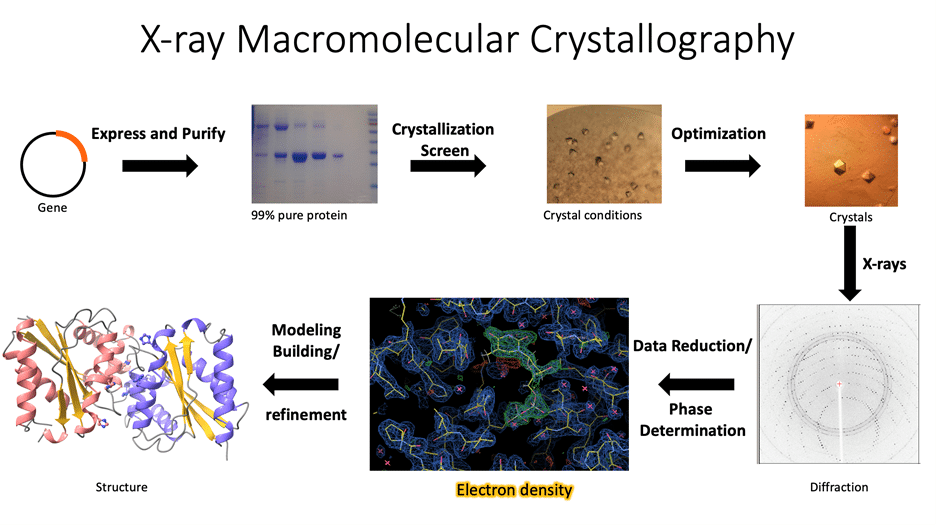
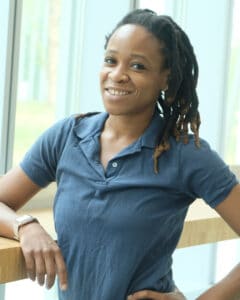
– Dr. Eta Isiorho
Research Assistant Professor & Macromolecular Crystallization Facility Director
Postdoc Spotlight
Emanuele Galiffi

Sponsor Highlight
Andrea Alù Leading 16M$ Research Program on Extreme Wave Phenomena Supported by the Simons Foundation
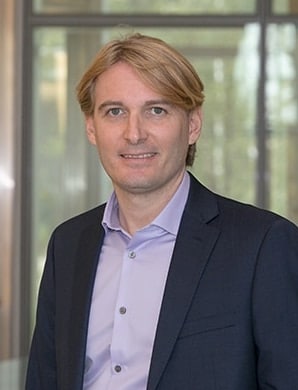
The effort, dubbed the Simons Collaboration on Extreme Wave Phenomena Based on Symmetries, will receive up to $16 million in support for theoretical and applied research spanning up to eight years in duration. Alù is leading an interdisciplinary team of researchers from the U.S. and Europe to better understand how various symmetries govern light and sound wave propagation in order to develop advanced principles that can guide the design of new engineered materials with exotic wave properties, facilitating new enhanced technologies.
Public Programming Spotlight
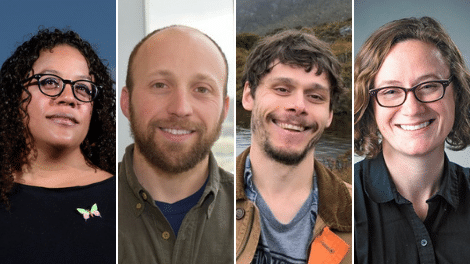
City of Science: Urban Ecology
November 17, 2021
Featuring Andrew Reinmann of the ASRC Environmental Sciences Initiative, along with Jessica Allen, assistant professor of biology at Eastern Washington University; James Lendemer, assistant professor of biology at the CUNY Graduate Center and associate curator of the Institute of Systematic Botany at the New York Botanical Garden; and Jessica Ware, assistant curator in the Division of Invertebrate Zoology at the American Museum of Natural History.
Research Updates

Environmental Sciences
The Environmental Sciences Initiative brings a distinct research vision to the environmental sciences, uniting state-of-the-art analytical capabilities, environmental analytics, and sensing technologies to create fundamental scientific knowledge for addressing the fundamental environmental research questions facing the planet today and into the future.

Nanoscience
The Nanoscience Initiative has a distinct research vision in nanoscience, focusing on the study and application of dynamic nanoscale systems, from fundamental understanding to applications ranging from biomedicine to food science and green energy.

Neuroscience
The Neuroscience Initiative actively promotes interdisciplinary approaches for the study of environmental influences on brain function and behavior and to develop transformative technologies and advanced platforms aimed at promoting mental health.

Photonics
Research in the Photonics Initiative encompasses biology, medicine, physics and technology fields such as computer display and lighting, as well as the futuristic fields of quantum information processing and quantum encryption, in which data reside on single photons, which are to light what electrons are to electricity.

Structural Biology
Research in the Structural Biology Initiative brings together biologists, chemists, and physicists to tackle many of life’s central questions. How do cells respond to their surroundings? How do they make copies of themselves? What determines the balance between health and disease?
Connect With Us
Contact Us
The ASRC is located at 85 St. Nicholas Terrace, New York, NY 10031.
p – 212.413.3300
e – ASRCinfo@gc.cuny.edu
For media inquiries or to speak with faculty or researchers at the ASRC, please contact Shawn Rhea, srhea@gc.cuny.edu
Support or Partner With Us
We welcome your inquiries about ways to partner with or support the ASRC, including any initiatives or projects that you’d like to impact.
Please contact Paul Mastrodonato, Development Officer for the Sciences, at pmastrodonato@gc.cuny.edu
5
RESEARCH
INITIATIVES
18
FACULTY
LABORATORIES
16
CORE
FACILITIES
>260
RESEARCHERS
& STAFF
202 GRANTS
TOTALING
$80M
675+
FACULTY
PUBLICATIONS


Social Connections
Challenge of the day: reach out to someone in your life that you miss – whether that’s a loved on, a work colleague, or a neighbor. Show them you care!
Social connections are a huge part of good mental health and healthy relationships are linked to lower rates of depression, anxiety, and higher self-esteem. So pick up the phone, send them an email, or do whatever makes you feel most connected to the people in your life.
Download sharable graphic